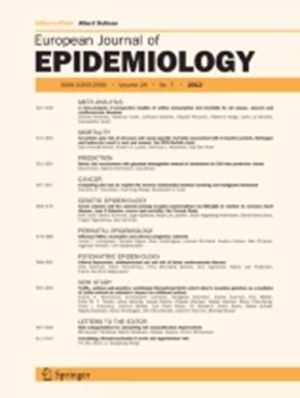PFAS暴露与血脂异常之间的关系:一项最新综述、荟萃分析和偏倚评估。
IF 5.9
1区 医学
Q1 PUBLIC, ENVIRONMENTAL & OCCUPATIONAL HEALTH
引用次数: 0
摘要
令人关切的是,广泛接触全氟烷基和多氟烷基物质(PFAS)可能导致血清脂质的变化,然而,目前的证据不足以确定人类之间的因果关系。本系统综述评估了69篇研究全氟辛酸(PFOA)或全氟辛烷磺酸(PFOS)暴露和成人血脂结果变化的文章。PFOA或PFOS与血脂的大多数关联要么不显著,要么显著阴性,要么是混合的,要么是显著阳性的结果,这表明没有共识的任何关联。通过荟萃分析检查了37项研究的子集,并对偏差进行了审查。通过汇总估计,PFOA和PFOS暴露与总胆固醇(TC)和低密度脂蛋白(LDL)显著正相关。PFOA与甘油三酯(TG)呈显著正相关,而PFOS与高密度脂蛋白(HDL)呈非显著正相关。TC和LDL的估计值显示出很高的异质性,在横断面和非职业研究中达到峰值,这些研究构成了meta分析的大部分。相反,纵向调查的汇总估计趋向于零,不显著。在偏倚分析中确定了异质性的潜在原因,主要包括不一致的混杂对照和可能来自已知PFAS污染地区的受试者招募偏倚。这些因素表明pfas -脂质文献不一致,需要进一步的前瞻性研究。本文章由计算机程序翻译,如有差异,请以英文原文为准。
The relationship between PFAS exposure and dyslipidemia: an updated review, meta-analysis, and evaluation of bias.
There is concern that widespread exposure to per- and polyfluoroalkyl substances (PFAS) may induce changes in serum lipids, however, current evidence is insufficient to establish causality in humans. This systematic review evaluated 69 articles examining exposure to perfluorooctanoic acid (PFOA) or perfluorooctane sulfonic acid (PFOS) and alterations in adult serum lipid outcomes. The majority of associations for PFOA or PFOS with serum lipids were either not significant, significantly negative, or were mixed versus significantly positive findings, suggesting non-consensus of any associations. A subset of 37 studies were examined via meta-analysis and reviewed for biases. Using pooled estimates, PFOA and PFOS exposure were significantly positively associated with total cholesterol (TC) and low-density lipoprotein (LDL). PFOA was significantly positively associated with triglycerides (TG), whereas PFOS had a non-significant positive association with high-density lipoprotein (HDL). TC and LDL estimates demonstrated high heterogeneity, peaking within cross-sectional and non-occupational studies that comprised the majority of the meta-analysis. Conversely, pooled estimates from longitudinal investigations trended towards null and were not significant. Potential reasons for heterogeneity were identified in a bias analysis and primarily included inconsistent confounding controls and possible subject recruitment bias from regions with known PFAS contamination. These factors indicate inconsistencies in PFAS-lipid literature that require further prospective investigations.
求助全文
通过发布文献求助,成功后即可免费获取论文全文。
去求助
来源期刊

European Journal of Epidemiology
医学-公共卫生、环境卫生与职业卫生
CiteScore
21.40
自引率
1.50%
发文量
109
审稿时长
6-12 weeks
期刊介绍:
The European Journal of Epidemiology, established in 1985, is a peer-reviewed publication that provides a platform for discussions on epidemiology in its broadest sense. It covers various aspects of epidemiologic research and statistical methods. The journal facilitates communication between researchers, educators, and practitioners in epidemiology, including those in clinical and community medicine. Contributions from diverse fields such as public health, preventive medicine, clinical medicine, health economics, and computational biology and data science, in relation to health and disease, are encouraged. While accepting submissions from all over the world, the journal particularly emphasizes European topics relevant to epidemiology. The published articles consist of empirical research findings, developments in methodology, and opinion pieces.
 求助内容:
求助内容: 应助结果提醒方式:
应助结果提醒方式:


